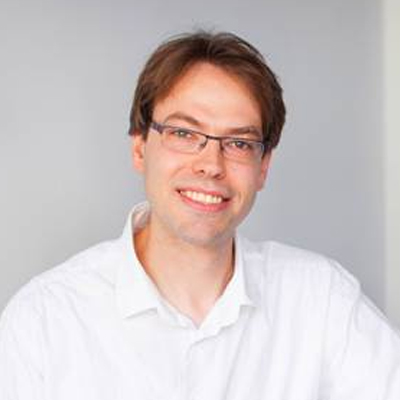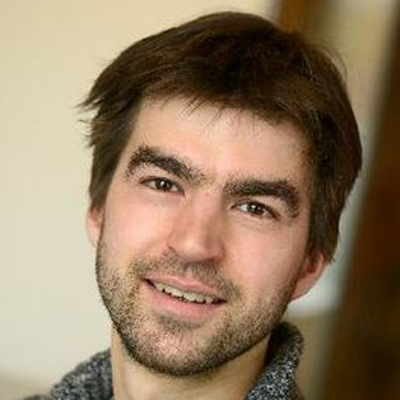ERC Starting Grant for three AS researchers
Five TU Delft researchers have been selected to receive an ERC Starting Grant. Three of these researchers work at the Faculty of Applied Sciences, the other two are affiliated with QuTech. The grants (1,5 million euros for a five-year programme) are intended to support scientists who are in the early stages of their career and have already produced excellent supervised work.
The grantees working at Applied Sciences are Daan Brinks, Arjen Jakobi and David Vermaas. Read on for a description of their research projects.
Daan Brinks
Understanding the brain is one of the great scientific challenges of our time. This pursuit fundamentally depends on advances in physical sciences and engineering to provide novel tools and methods to perturb, record and interpret brain activity.
Information in the brain is encoded in changes in the voltage across the membrane of brain cells. Voltage imaging with genetically encoded voltage indicators (GEVIs) is a revolutionary method that allows faithful recording of the fast electrical dynamics of many genetically targeted cells in parallel. “These GEVIs are modified proteins that are able to convert changes in membrane potential into an optical signal that can then be detected using microscopes”, said Daan Brinks. “The technique provides an unprecedented means to record how patterns of change in this membrane voltage, called action potentials, manifest in subcellular compartments, cells, and networks across the brain, which is the only way to arrive at a fundamental understanding of brain functions like learning and memory, and of neurodegenerative diseases.”
For this promise to be fulfilled, we need voltage imaging deep in the living brain of awake and behaving organisms. To achieve this, the Brinks lab will evolve a GEVI optimized for three-photon (3P) imaging, a technique that allows for noninvasive functional imaging by making visible cells that are located in the deeper tissues of the brain. Brinks: “We will do both a genetic optimization of GEVIs, as well as an in depth investigation of their photodynamics under high power, which is necessary for 3P-imaging.” The group will apply their new technology in an investigation of memory formation in the mouse cerebellum.
Arjen Jakobi
Our immune system is a formidable barrier for the many microbial pathogens that we encounter every day. A number of these pathogens have therefore evolved to avoid this barrier by invading our cells, and seeking shelter inside a structure called the phagosome. This phagosome is a compartment inside the cell, delimited from the cellular environment by a membrane that physically prevents the pathogen from being recognized and eliminated.
How do we cope with such pathogens that play hide-and-seek? We know that our cells produce so-called ‘effector molecules’ that recognize phagosomes and breach their membranes, so that the pathogens inside can be detected and eliminated. This requires large protein assemblies that dynamically change their shape and thereby physically distort the compartment’s membrane so that it ruptures. Understanding how this all works will provide important insight into a central and ancient mechanism of our immune system.
Arjen Jakobi will use electron microscopy to study this process by making it visible at the nanoscale. “The dilemma is that, at present, we can either make very detailed pictures of protein molecules in an artificially simplified environment, or obtain very blurry pictures of these molecules inside the complex environment of the cell”, said Jakobi. “For a thorough understanding we need both the detail and the complexity.” Jakobi will bridge these two worlds by developing new electron microscopy tools that will allow him to obtain sharp images of such dynamic processes in the full complexity of their natural cellular environment. His insights may help the design of new strategies enhancing our cell’s ability to fight off intracellular pathogens. The new microscopy tools will also aid him and other researchers in obtaining molecular images of many other fundamental cellular processes that are central to health and disease.
David Vermaas
In his ERC project, David Vermaas will introduce novel concepts to enforce a breakthrough in the operational speed of electrochemical conversions, such as electrolysis and water desalination. “This breakthrough is necessary to meet the growing demand for green energy carriers and clean water”, said Vermaas.
Electrochemical methods can utilize the increasing supply of solar and wind energy in a single-step process to synthesize fuels and clean water. However, despite recent developments in electrocatalysts and system design, none of the electrochemical methods has grown to a market-leading technology in the energy or water sector. This is due to a low degree of process intensification. “A higher electrical current density without sacrificing energy efficiency is needed, and can only be achieved via enhancing mass transport, addressing the dominant losses at high current density”, said Vermaas.
This ERC project will use a multiscale approach to address the mass transport limitations. The aim is to understand and enhance mass transport using novel concepts. The Vermaas group will, for instance, address diffusion limitations by studying suspension electrodes. The planned multiscale approach, with in-situ measurements of local flow and concentrations, will target the fundamental understanding and control of mass transport in electrochemistry.



